Fresh from his solo exhibition currently running in Margate, Andrew Torr — one of the newest members of the NEAC — shares his motivation and process, and reflects on, among other things, his recent work focusing on the oft-overlooked world of housing estates…
My interest in housing estates began as far back as the 1990s when I was in my mid-20s. I started taking photographs around the large estate where my parents live in South Yorkshire.
I wasn’t entirely sure what it was that I was after, but I suppose there is something about the sprawl of houses that speaks about all of us, both as a nation and globally. The comfort of convenience and conformity, and the refuge from the wider, messier world. Middle-Englander heartlands.
However, I had no intention of using the photographs for paintings, mainly because I couldn’t see a way to approach it as a subject for paint. Nothing came of the photographs. Decades later, painting another subject led me back to these places.
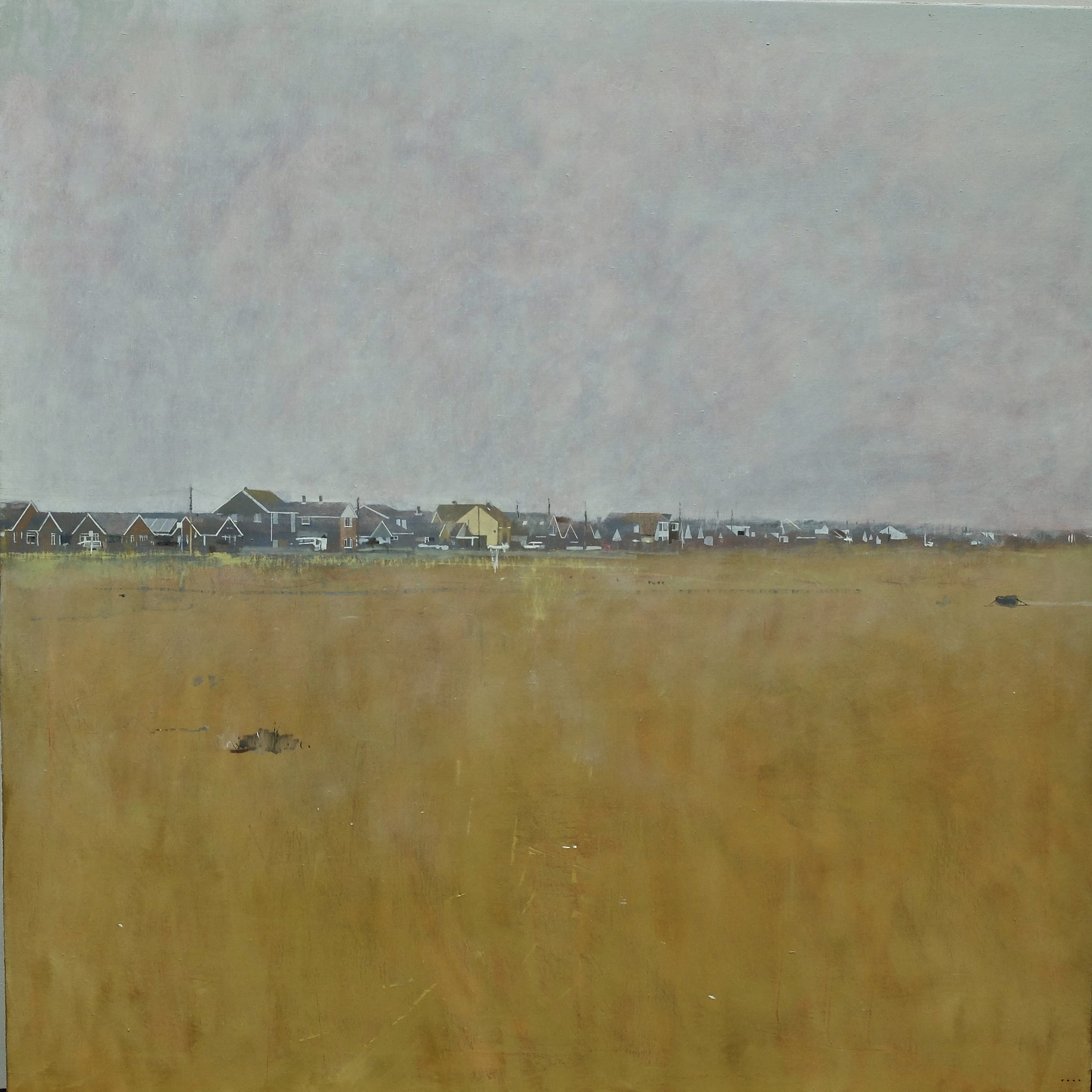
'Dungeness', 2022, oil on canvas, 100x100cm
In 2022, I made a series of studies of the Kentish beach at Dungeness. Although I’d visited the place many times, I had resisted working from the landscape there. The flat, vast beach is an extraordinarily strange moonscape, and understandably, it has become a magnet for painters wishing to describe and convey this strangeness.
I’m more interested in using subject matter as a vehicle for playing with paint and, hopefully, to push what paint can do. I don’t want to add to the museum walls of work trying to portray the sublime vastness. I find it difficult not to think of hackneyed paintings of sunsets or grand landmarks. There’s nothing wrong with either if painted well; there are some beautiful paintings of Dungeness. But I think, if you want to experience the prairie majesty of Dungeness, go there rather than look at a painting. It is genuinely astonishing.
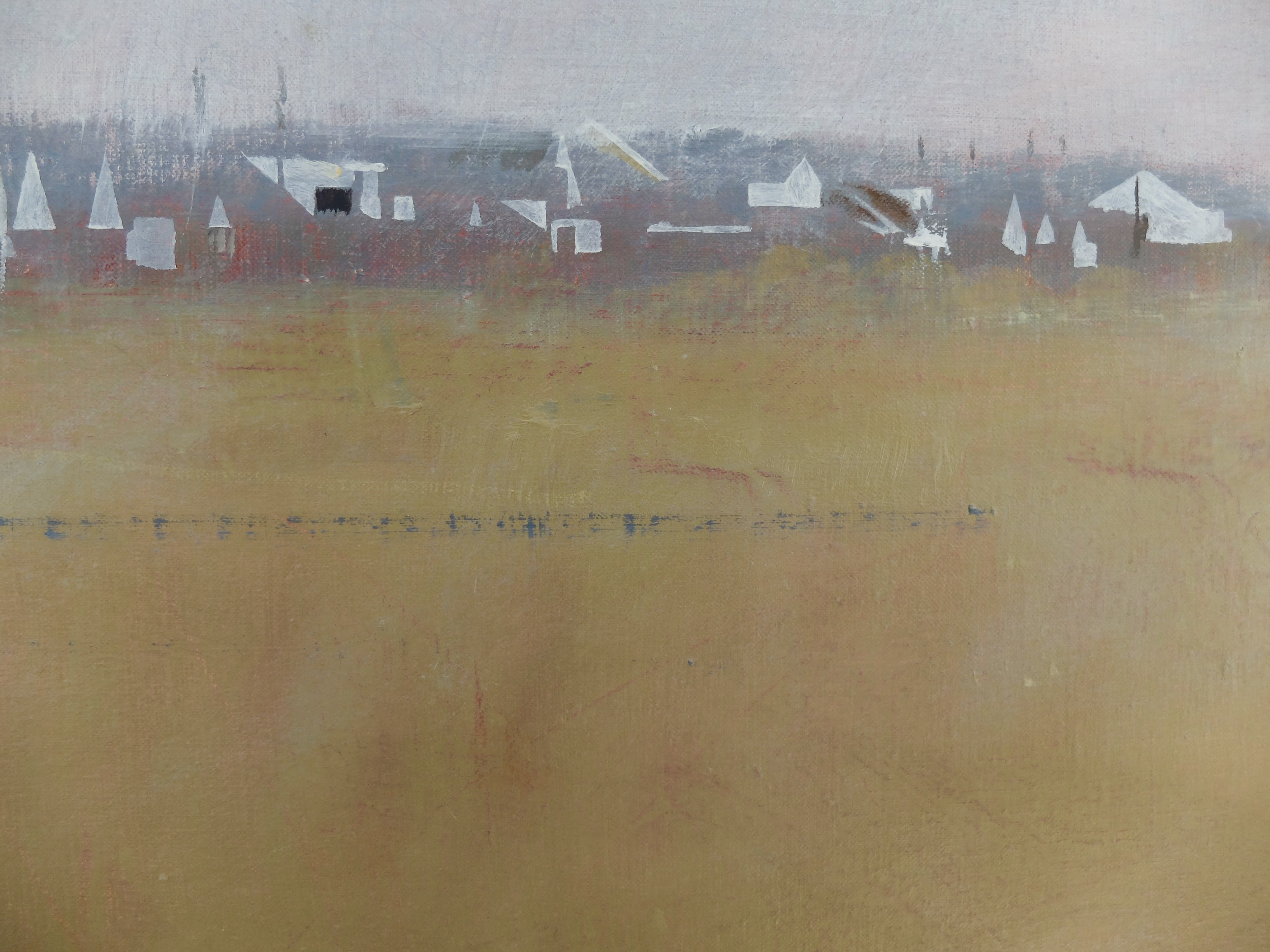
'Dungeness detail', 2022, oil on canvas, 100x100cm
However, as I was walking on the beach, I noticed how the low sun lit the walls and roofs of the thin line of houses receding into the distance and was struck by the way these angular, crystalline shapes defined the border between the sky and the ground. My work has always been about the visual flip-flop between abstraction and depiction, so the way that these houses were dissolving and distilled by distance to basic geometric shapes was very pleasing.
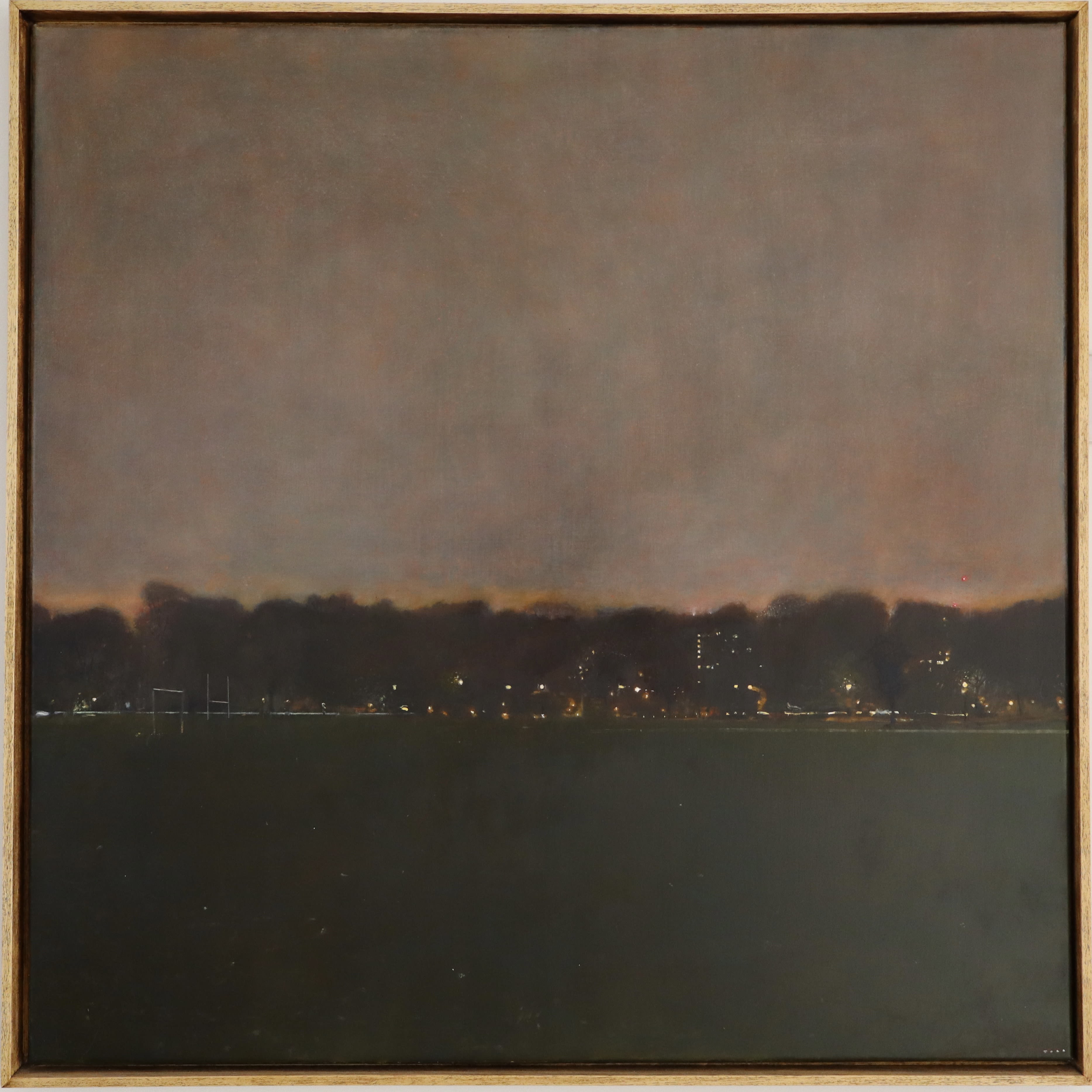
'Nocturne - Battersea Park', 2019, oil on canvas, 100x100cm
The syncopated, skittering rhythm on the horizon was something that I had been interested in while painting an earlier series of the commons of London at night. In these nocturnes, I liked how the street lights and traffic made a rhythm too.
The strip of light separating the land from the sky was even suggestive of a musical stave, and the busier the roads around each common, the funkier and more syncopated the notation becomes. Wandsworth Common is a plaintive Chopin piano piece. Clapham Common is a 200bpm bebop workout.
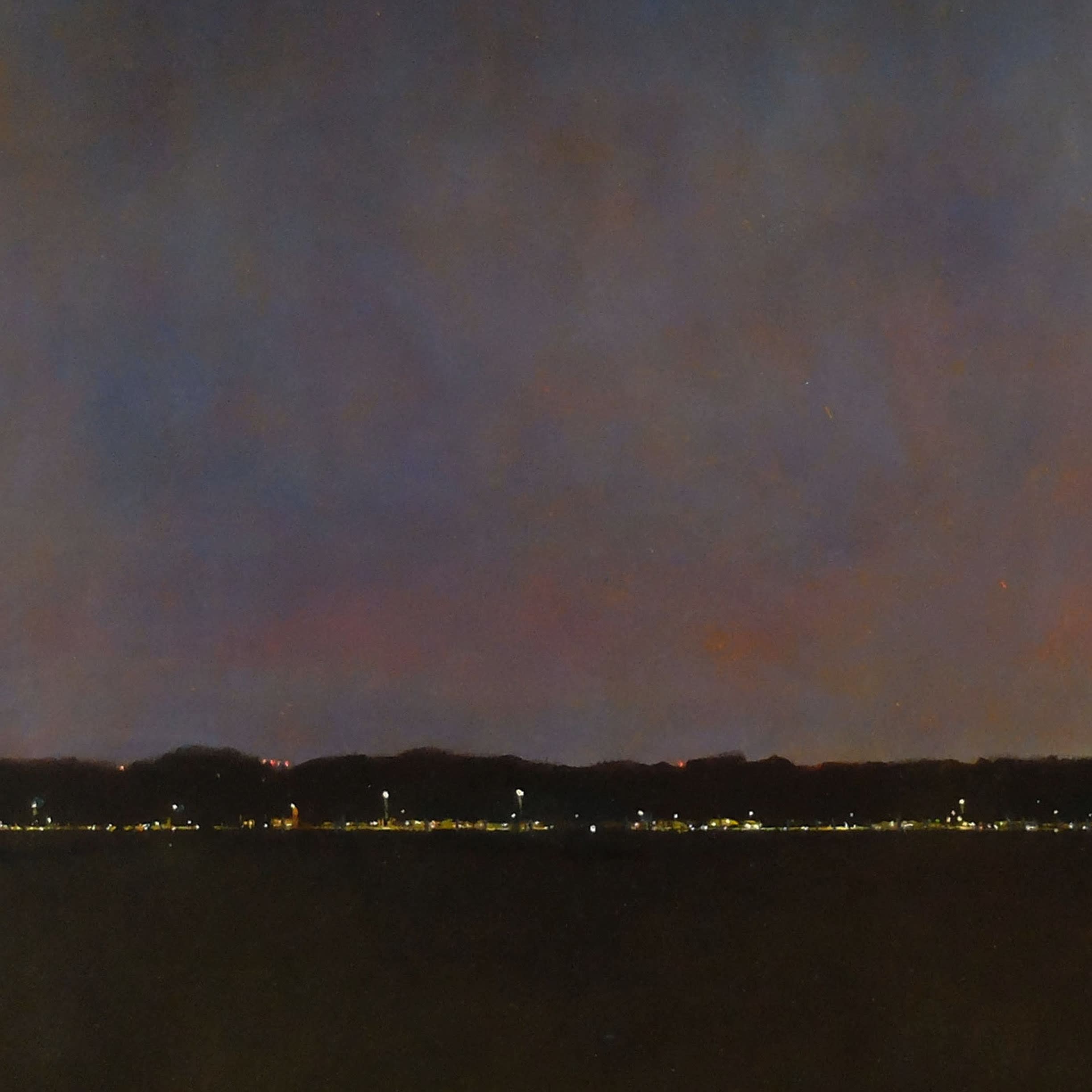
'Nocturne - Clapham Common', 2018, oil on canvas, 100x100cm
I was pleased with the resulting Dungeness work and, not long after, while we were visiting relatives in Yorkshire, we were driving on an approach road to my parents’ town that affords a view of their housing estate rolling over the crest of the horizon. I was struck by the way the white eaves, guttering, drainpipes and windows of the homes had their own rhythm – a higgledy-piggledy geometry of angles and intersections. I’m guessing it was sunny; Yorkshire doesn’t see an awful lot of sun.
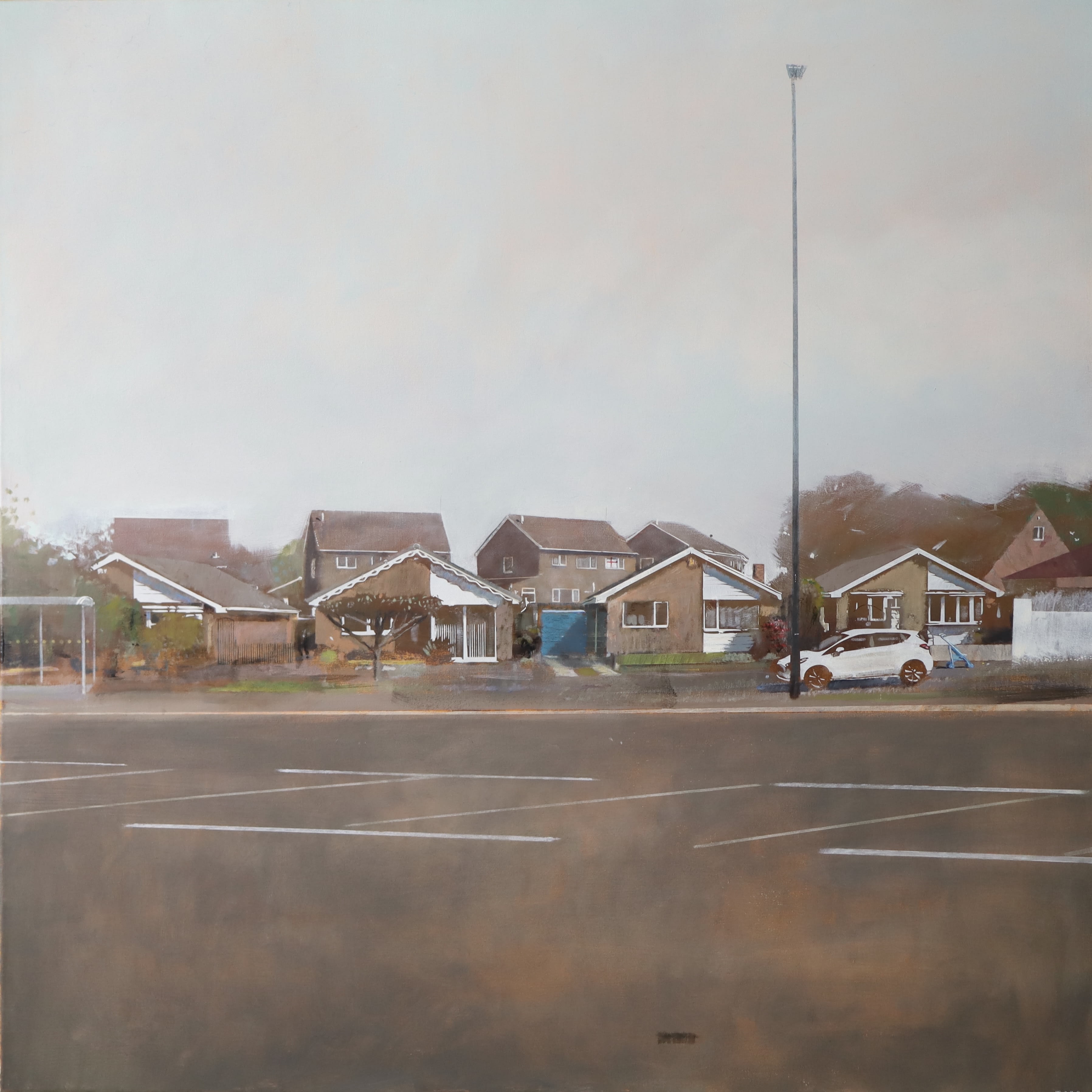
'Estate - Letter From Helmand', 2025, oil on canvas, 100x100cm
But I’ve since noticed how much more the white-painted wooden and uPVC fixtures pop and punctuate the brown-grey beige of the brickwork in the sun. I stopped the car and began taking photographs. Immediately, I could see how this would be an interesting challenge for a painting.
Since then, I have made countless drawings and paintings from recces in housing estates all over the UK. It is interesting that I’ve come back to this subject after all these years. Not because I wanted to say something about their ‘meaning’ as I did in my 20s, but because I have a formal interest in the shapes and forms that are the nuts and bolts of painting.
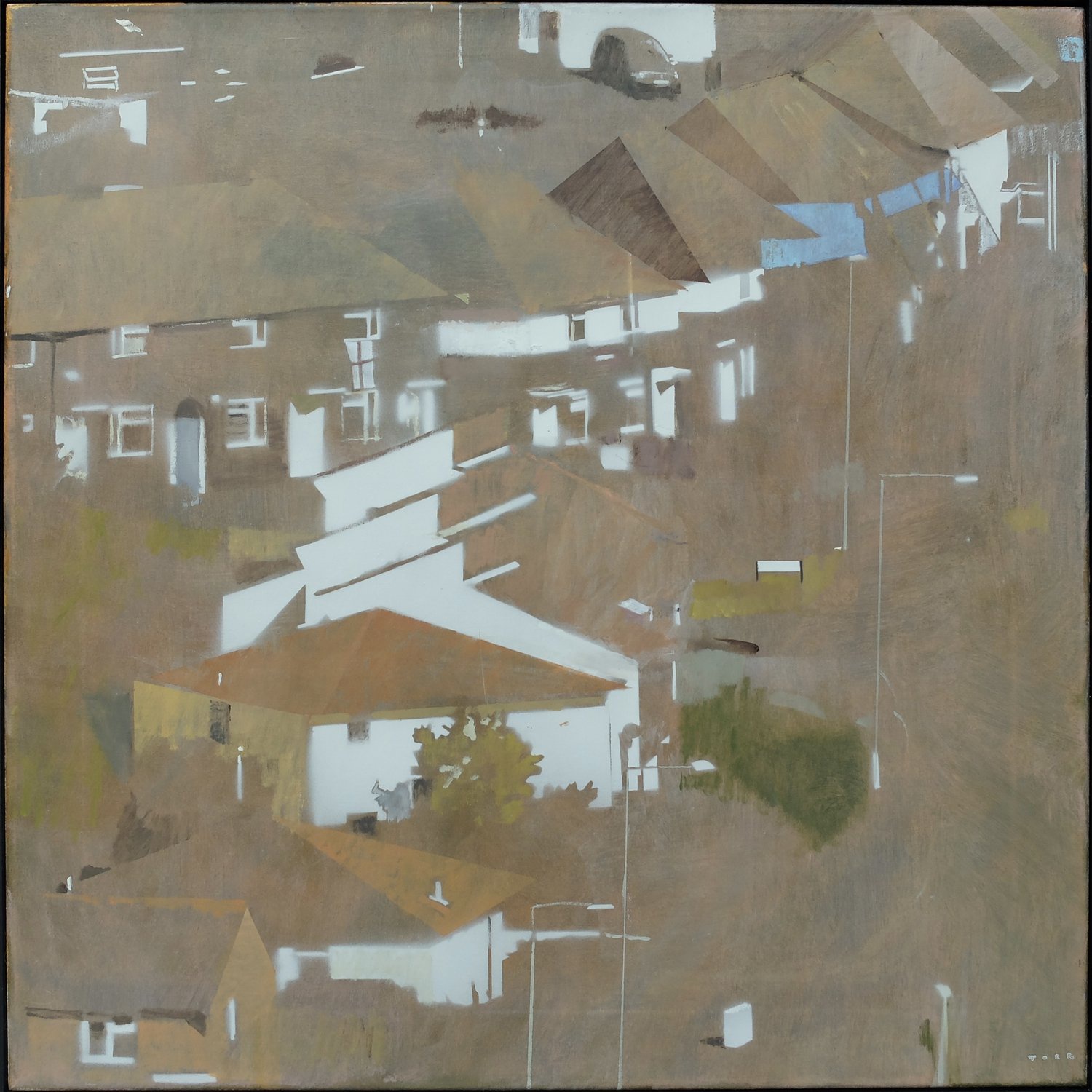
'Small Estate', 2023, oil on canvas, 50x50cm
I love the way the white elements of the houses can flatten the picture plane so that even the vast receding space of a suburban townscape is flattened and becomes a rhythmic pattern, independent of the subject. I like that the rows of houses are uniformly spaced so that the roofs – all sitting at the same angle – punctuate the space. And I still recognise the visual nod to musical scoring. With the estates, it is maybe more a nod to John Cage’s non-linear, graphic notation – but it’s there.
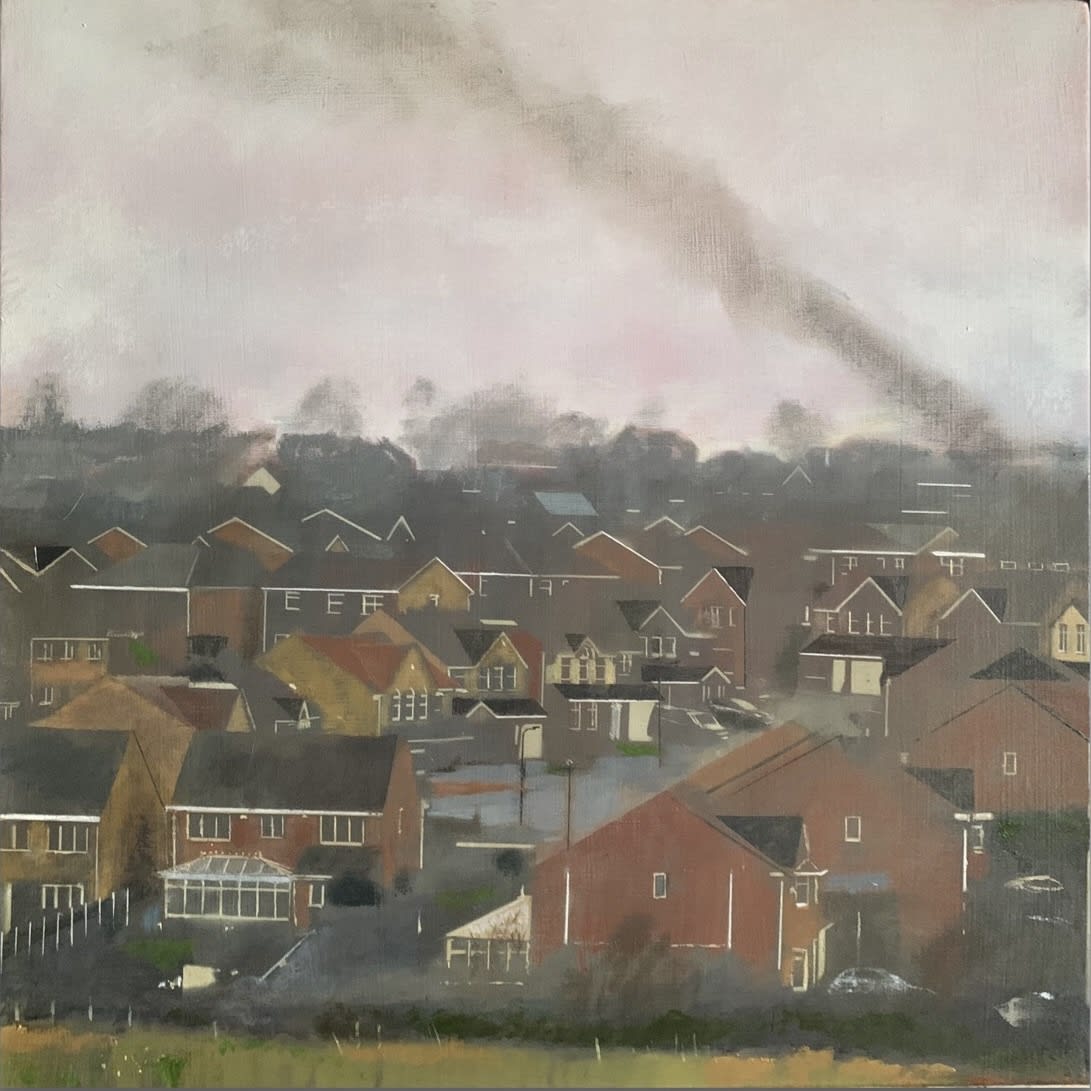
'Estate - Incident', 2024, oil on canvas, 30x30cm
The best, unexpected advantage of working from this subject, though, has been the response from viewers. While my interest in housing estates is primarily formal, it’s a genuine thrill to discover how much memory, nostalgia, pathos and drama has been stirred in people seeing these paintings.
In some cases, I will lean into this drama. I have titled more than one of these paintings 'The House of the Hanged Man' after Cézanne’s painting of the same name. (It was very pleasing to discover that no one had been hanged in the house in Cézanne’s painting either!)
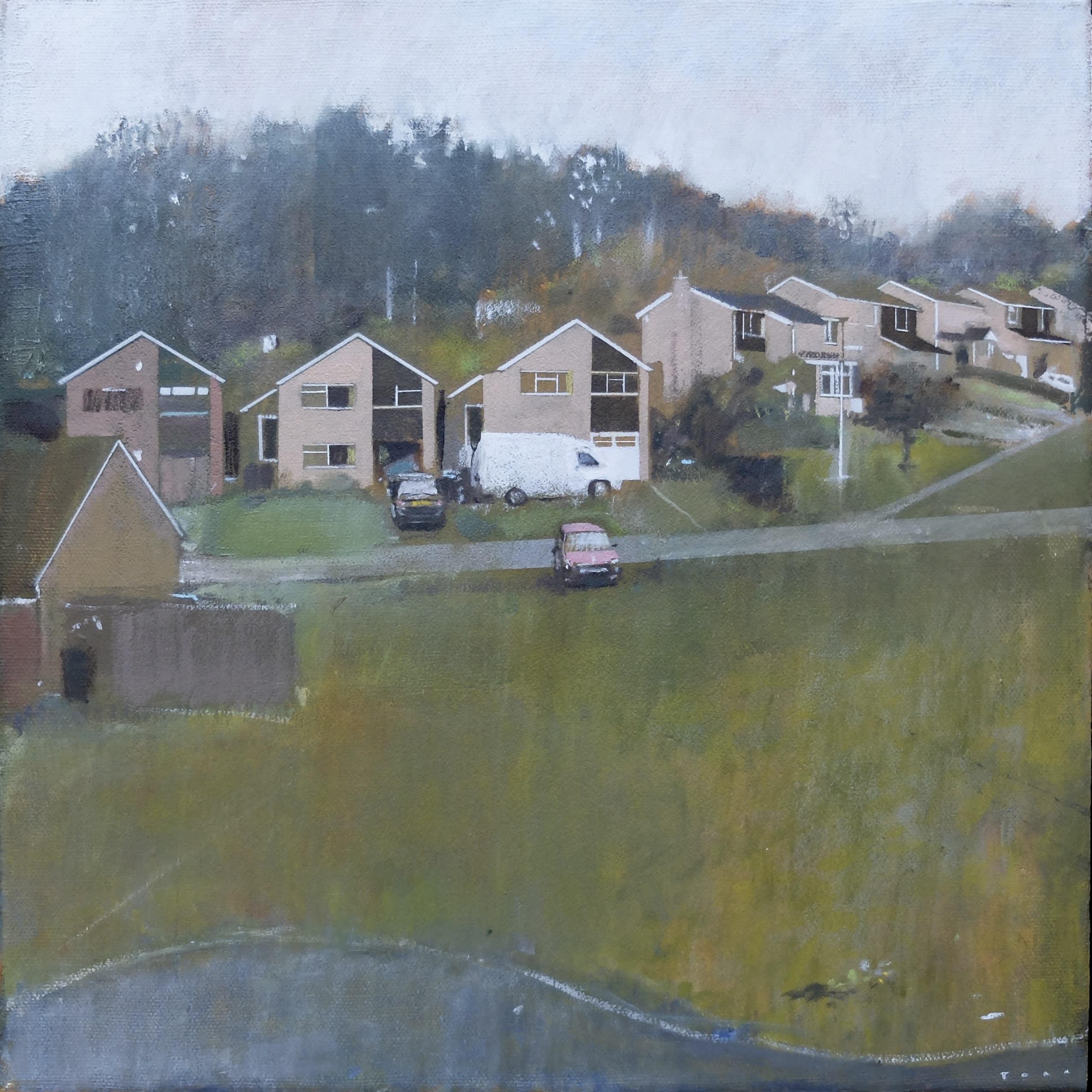
'Estate - The House of the Hanged Man', 2024, oil on canvas, 30x30cm
Also, it has been exciting to discover how people’s views of these places have changed because of the work. It would be disingenuous of me to describe the estates as beautiful, but hopefully the paintings find some beauty there.
I like to tell the story of my original photo shoots around my parents’ estate decades ago. When I arrived back at her house after one particular sortie, my mother asked me why on earth I was taking pictures of their estate. “It’s bloody awful!” she said. I’m not sure it’s bloody awful, but I knew what she meant. It’s an odd thing to say about where one lives, but more than that, it says a great deal about what we think of as suitable subject matter for painting.
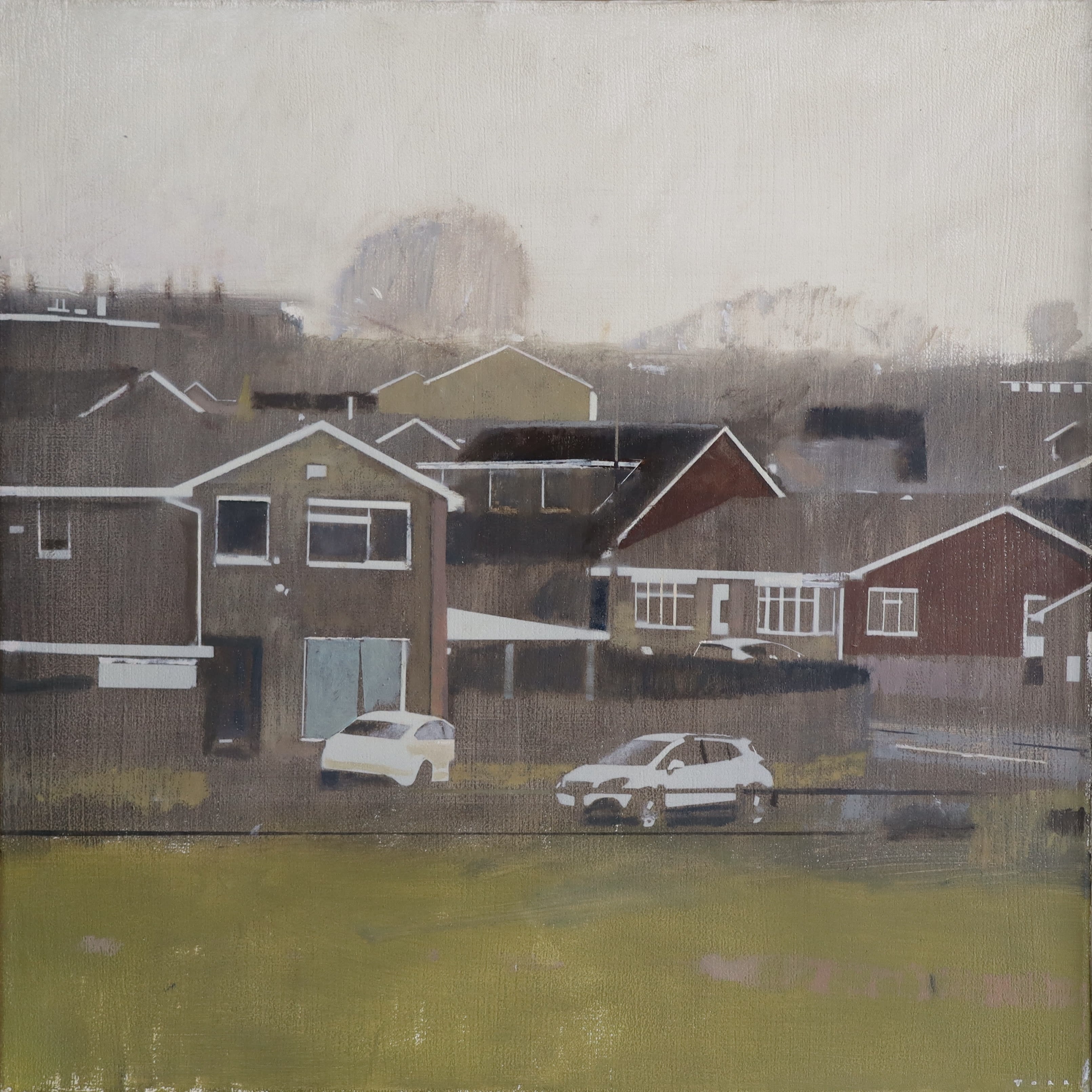
'Estate - End Of the Affair', 2024, oil on canvas, 40x40cm
Andrew Torr's solo exhibition Heartland is at Liminal Gallery, Margate until 30 August 2025. You can also view and buy more of his paintings and find out more about Andrew on his NEAC artist profile page.
Header image: 'Heartland' (detail), 2025, oil on canvas, 100x100cm

